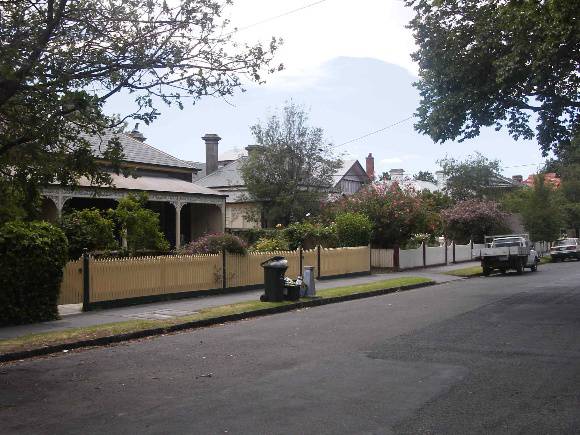| Back to search results » | Back to search page » |
|
Cecil Street Heritage Precinct
LocationCecil Street WILLIAMSTOWN, Hobsons Bay City LevelIncluded in Heritage Overlay |
|
Statement of Significance
Statement of Significance What is Significant?
The Cecil Street Heritage Precinct, which comprises all land in HO1 and generally includes properties with a frontage or side boundary to Cecil Street, Williamstown. How is it Significant? The Cecil Street Heritage Precinct is of local historic, social and aesthetic significance to the City of Hobsons Bay. Historically, Cecil Street formed the southern boundary of Williamstown as originally surveyed by Hoddle in 1837 and is significant for its ability to illustrate important phases in its development from soon after the first land sales between 1837 and 1840 to its proclamation as a city in 1909. It assists in understanding and interpreting how streets in proximity to the port area traditionally included a mix of residential and commercial uses and is notable for its high proportion of very early residential and commercial development including a number of pre-1860 dwellings. (AHC criteria A4, D2 and G1) Aesthetically, Cecil Street is significant as an integral part of the broader Government Survey heritage precinct and includes characteristics that are typical of the broader precinct as well as those that are unique. Despite some intrusive and unrelated postwar development, the precinct retains intact groups of predominantly nineteenth and early twentieth century dwellings, with interspersed public, church and commercial buildings that are characteristic of this part of the broader Government Survey heritage precinct and an essential part of the historic character of early Williamstown. - Unusual or rare building styles and types such as the basalt houses and the timber duplex houses with no dividing wall that are characteristic of this part of Williamstown but less common elsewhere in the metropolitan area. - The unifying effect throughout the precinct of groups of predominantly Victorian and Edwardian era houses with common or similar characteristics of design, siting and scale that create cohesive and homogeneous streetscapes. Many are externally intact and others, although altered, still retain their distinctive form and siting and hence contribute to the precinct. - The sections of the roadway in its basic early layout and the remnant mature exotic street planting that combines with exotic planting in private gardens to reinforce and enhance the period expression of the precinct. The distinctive elements of Cecil Street are: - The contrast of the modest residential buildings with: - The grand civic and public buildings on key sites throughout the precinct. - The traditionally styled (two-storey, stuccoed and parapeted) early hotels located on corner or mid block sites and constructed to the building line. - The narrow street width, which creates a greater sense of enclosure than in the other main Government Survey streets. On this basis, the following properties and other elements contribute to the significance of the precinct: - Cecil Street (even) 12-14, 20, 22, 26-30, 34, 46-50, 56-58, 82, 86, 116, 120, 132-140, 146, 150-154, 156-160, 174, 180 and 182 - Cecil Street (odd) 13, 23-47, 53, 55, 61-69, 85-89, 97, 103, 105-123, 127, 129, 133-45, 155, 173 and 185. - Surviving sections of nineteenth century street layout and mature street trees. Please note that some heritage places within this precinct may be listed as contributory to the Government Survey Heritage Precinct or have an individual citation in this Study.
Group
Residential buildings (private)
Category
Residential Precinct




